If you’ve eaten Indian food then you’ve probably thought it had a lot of spice. Before I came to India and tasted many of these delicious dishes, I also wondered, why do Indians use so much curry in their food?
Indian curries use so much spice for a number of reasons. In hot climates like India, bacteria will spoil food faster, yet spices have antibacterial properties and can kill 75% of the bacteria in food. Spices are also healthy with antioxidants and add delicious flavors.
However, in India, you won’t find curry powder in grocery stores and you won’t find curry dishes at local restaurants. Indian’s don’t use “curry,” because this is a word the British created to refer to all Indian dishes.
Curry is a tree and the leaves are commonly used in South Indian food. The word is also similar to the Tamil word for a generic sauce. Yet through the years, this word has come to describe many Indian dishes.
If you want to further understand what curry means and why Indians use so much, then read on in this article as we break it down.
What Does Curry Mean in India?
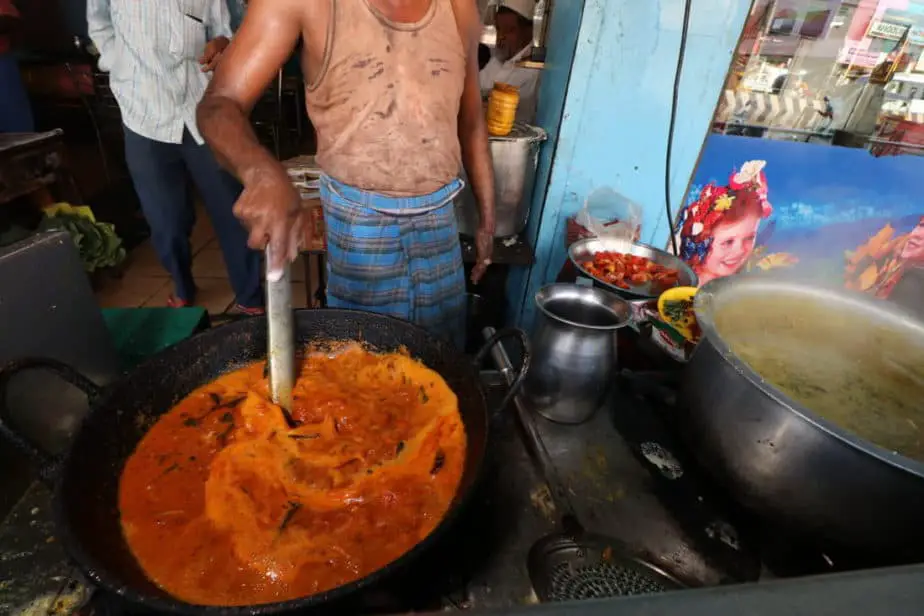
Indians don’t really use the word “curry,” except in tourist restaurants. Curry is an English word that originated from the Tamil word for sauce or “kari.“
Leaves from the curry tree (Murraya koenigii) are also one ingredient in South Indian dishes, however, there are many other ingredients. These ingredients change from dish to dish, region to region, and even household to household.
Unlike many Western cooks, Indian cooks will vary the amount of each spice carefully, cook or fry each spice to bring out the most flavor, and vary the dish according to the recipe they may have used in their own family for generations.
The British started calling all Indian dishes curry though. So today many foreigners just call all Indian dishes curry as well. When in actuality, there are countless dishes with a wide variety of ingredients.
Why did the British simplify the name for Indian dishes? Well, you can imagine some settlers handing on India’s shores many centuries ago and meeting some local Indians. Maybe the locals were eating and if asked they might have called their food ‘kari’ because that means sauce.
Then as these settlers became colonists, and colonists who ate a lot of Indian food and later moved back to India… maybe it was easier to just call the food curry.
Instead of dhansak, saag, korma, jalfrezi or one of the hundreds of other names.
Fast forward to today and there are countless varieties of curries across India, as well as in many countries from Thailand to Japan to Indonesia.
When Was the Word Curry First Used?
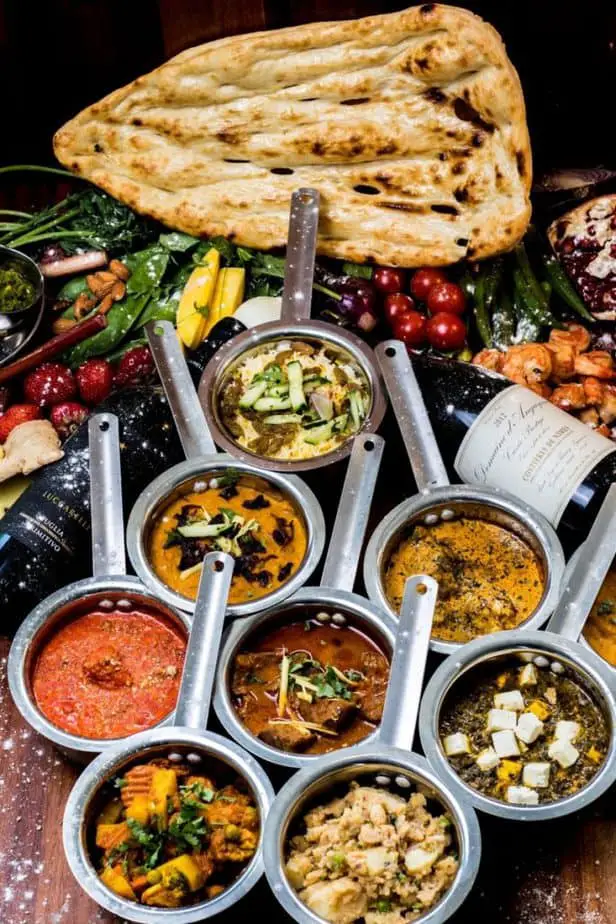
The first usage of the word “curry” can be found in a mid-17th century Portuguese cookbook written by members of the British East India Company.
The Company was trading with Tamil locals along the southeast coast of India and called the spices… “kari podi” or curry powder.
In 1747, the word “currey” shows up in a cookbook written by Hannah Glasse. Then again in 1758 in The Art of Cookery (which you can still buy on Amazon, click the link to check the current price) she writes, “To make a Currey the India Way.”
You can imagine the British colonists loving Indian food (who wouldn’t!), then tweaking the dishes to their own tastes, and taking them back to England… where the craze of curry houses eventually began.
Now curry is a dish found across the world. There is:
- Japanese curry: The simple brown comfort food that is very popular across the country. They are even trying to spread it to China.
- Thai curry: From green to red sauces, there are many types made using red or green chilies and lemongrass.
- Indonesian curry: The primary ingredients are nutmeg, cloves, cinnamon, or even anise and they are made creamy with coconuts or ground cashews.
- Bangladesh curry: Often uses sumac, a Middle Eastern red seed with a lemon flavor. The sauces are either tomato or coconut-based.
While curry dishes have spread around the world, you can find so much diversity in the dishes in India alone. With the many different environments, local vegetables, and cultural diversity, there is no end to the number of Indian curries.
However, most Indian dishes have one thing in common… they are often spicy.
Why Is Indian Food Spicy?

Some people claim Indian food is spicy because the climate is hot, and spicy foods make you sweat so they cool you down. Others claim spicy food has antibacterial properties and since hot climates tend to spoil food faster, the spices preserve the food for longer. But chilies also grow very well and are delicious.
The reasons above have NOT been proven by science though. The study Do People Living in Hot Climates Prefer Their Food Spicy Hot or Not? took at look at the hot climates like Spain, which do not eat spicy food.
The heat sensation in chile peppers is caused by capsaicinoids: 22 closely related alkaloids, found only in chile peppers.
Zewdie Y, Bosland PW. Biochem Systematics Ecol 2001.
Capsaicinoids trick your brain into thinking it’s hot, so therefore you start to sweat. However, if you’ve eaten peppers on a hot day, you will know that this sweating is not usually comfortable AND doesn’t produce a significant reduction in your body temperature.
The claim about spicy food preserving food for longer is entirely plausible, especially when living in India.
Where I live the power goes out a few times a week and once a month for 8 hours at a time. Having spices in your food can keep it from spoiling.
A team of researchers at Cornell University found that capsaicinoids killed or inhibited up to 75% of bacteria in foods. This seems like a great reason to add more spices to the food.
Another simple reason is that India has 40 to 50 varieties of chilies and they grow very well in the hot climate.
People have always eaten foods that grow locally, so it seems like common sense that people would eat more of the vegetables grown here.
What Are The Most Popular Curry Dishes in India?
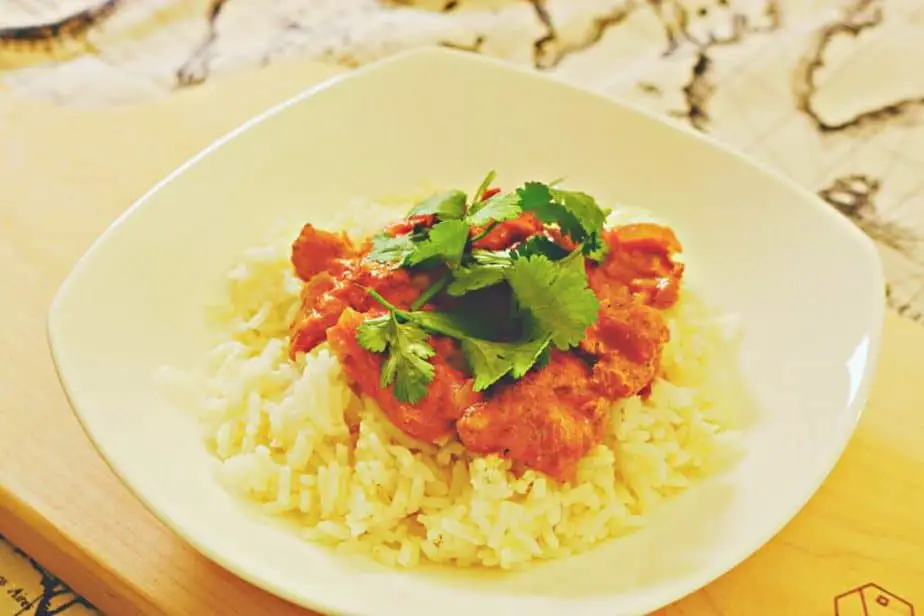
Chicken tikka masala is one of the most popular Indian dishes around the world. It is followed by types of biryani, vindaloo, and korma.
Butter chicken is popular in North India. Masala dosas are common in South India. Kerala, Goa, and other coastal areas use a lot of coconut in their sauces.
Curries are often classified by being either: wet or dry.
Dry curries are found in stir-fries with oil. Wet curries are poured over rice and often use coconut milk or cream.
Curry sauces are a blend of many different spices, but the most common are:
- Turmeric – British-Indian food has a lot of this spice, which is why it is often yellow. Indians often just use a pinch of this, and it is very healthy. Being proven to prevent cancer, Alzheimer’s, dementia, and heart disease.
- Cumin – Sweet, earthy, nutty, bitter. Whole cumin seeds are added to tadka, and ground cumin is added to daals, sauces, and soups.
- Coriander – The seeds have a citrus flavor and are a bit spicy and nutty
- Ginger – Hot and zesty this is a strong spice with pungent aromas
- Chilies – These are the spice and heat that is so common in Indian dishes. There are many varieties.
However, there are so many other spices that Indian cooks will use to add complex layers of flavors to their food:
- Cinnamon sticks
- Cardamom
- Fenugreek seeds
- Mustard seeds
- Cayenne pepper
- Cloves
- Saffron
Indian homes often have a masala dabba, which is a circular spice container with 6 to 7 of the most common spices. However, from state to state the types of spices used might vary widely.
What Are the Types Of Curry by State in India?
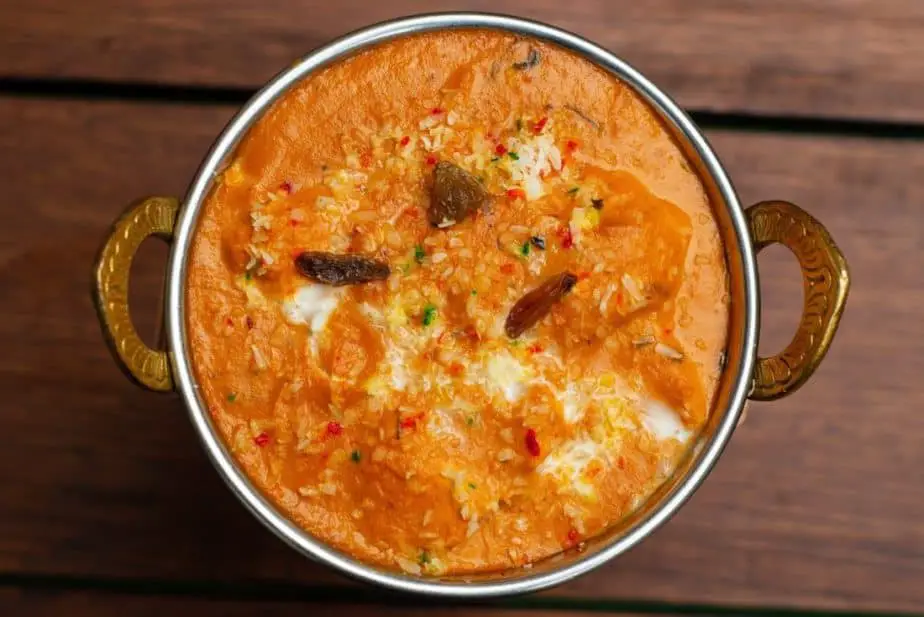
There are so many different varieties of cuisine in India that you could tour the country and try a new dish every night, and never run out of new foods.
Here are some dishes and common ingredients that I’ve run across to give you an idea of the range of delicious Indian curry dishes.
Northern Indian Curry Dishes
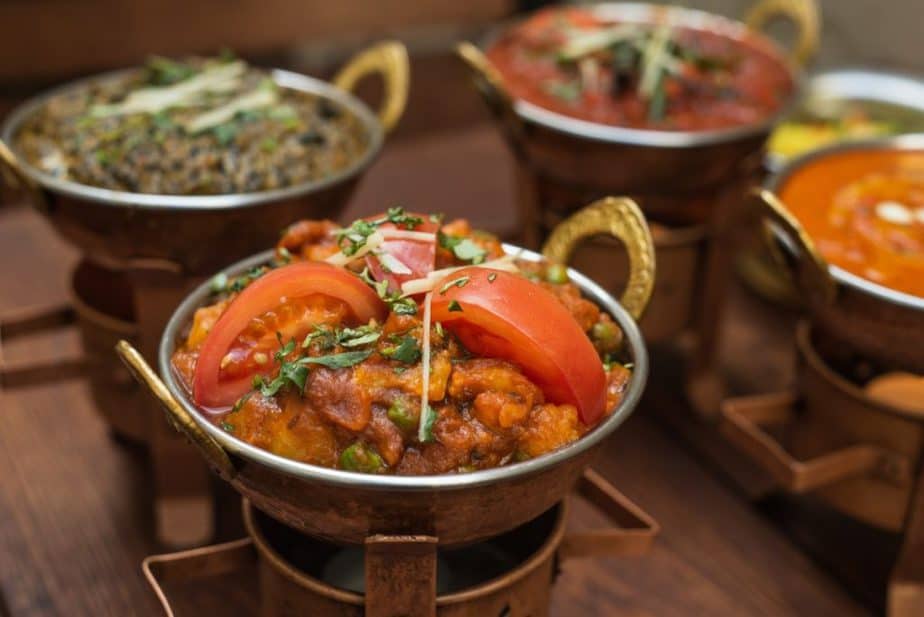
North Indian dishes are often wet sauces using dairy products and coconut milk. Butter chicken is a staple at tourist restaurants.
North Indian food isn’t as spicy as South Indian food, although most Westerns will find it spicy enough 🙂
North Indian dishes often use:
- Fenugreek seeds to add a sweet and nutty, yet bitter flavor.
- Amchoor is a powder made from green mangos adding a citrus taste.
- Garam masala is a blend of spices – black peppercorns, coriander, fennel, nutmeg, green cardamom, cloves, mace, cinnamon, black cardamom.
Rajasthan
Rajasthan is the desert region in North India. It’s nicknamed the “Land of Kings” and was the home of people who went to war a lot.
Due to the desert climate, the sauces used are often dry as water is scarce and they might need to take the leftovers with them as they travel to the next battle.
Laal maans is a common meat curry dish, often made lamb and plenty of red chilies.
Gujarat
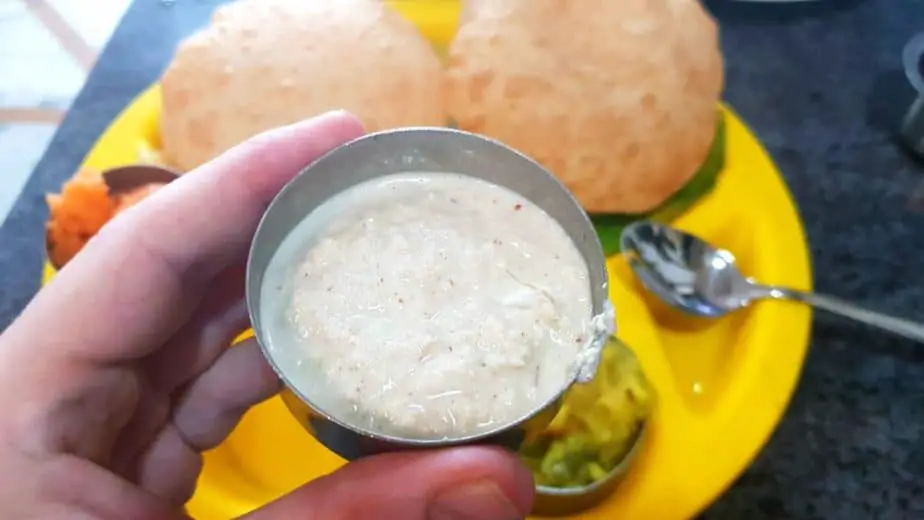
Gujarat is a Northwestern state in India, just north of Mumbai and east of Pakistan.
The main dishes have a lot of buttermilk and coconut milk sauces. Undhiyu is one specialty that resembles a casserole with a wet milk-based sauce. It is cooked in a pot made of earth.
Jammu & Kashmir
Rogan josh is a popular dish in Britain that comes from this region. This lamb dish has a red sauce with Kashmiri chilies and flavors from the cockscomb plant, a local red flower.
Maharashtra
Maharashtra is the state where Mumbai is located, you can find a wide variety of curries. One popular one is Matnacha rassa which is a red curry made with mutton.
Punjab
Tadka is used in most Punjabi dishes. Tadka is the technique of using a blend of ground or whole spices and roasting or frying them in oil.
Goa
Vindaloo was born here and the word comes from the Portuguese words vinho (wine) and alho (garlic).
There actually wasn’t vinegar in India at first, so they made some.
The Portuguese also brought pigs with them and vindaloo was traditionally made with pork.
Karnataka
Vegetarian curries are popular in central Karnataka, while seafood or meat curries are often eaten on the coast.
Kori Gassi is a Mangalorean dish with chicken, red chilies, and coconuts.
Kerala
Kerala is a coastal southern state and many of the dishes have shredded coconut paste or coconut milk and curry leaves.
Seafood is popular and fresh in the coastal cities like Cochin.
There are also more Christians here and eating beef is a common dish found in many restaurants and households.
Tamil Nadu

Tamil Nadu is the southern state where curry originated. Here you can find plenty of curry leaves at roadside vegetable stalls and in your dinners.
Masala dosa is a delicious potato and onion curry with a savory pancake.
Tamarind, a sour pea-like pod, is added to many curries adding a lip-puckering tang.
Final Words
Indians use so much curry because the British call every Indian dish curry. In reality, there are countless varieties of dishes that commonly use a handful of spices like cumin, coriander, ginger, turmeric, and chilies. From state to state, you will find that the sauces vary based on the available foods and culinary history.
If you’re planning a trip to India or just interested in Indian food, check out my post: 12 Lip-Smacking Food Souvenirs From India
Related Articles:
- Do Indian Restaurants Sprinkle Cow Urine on Your Food?
- Do Indians Use Toilet Paper?
- Is Quinoa Indian?
- Is Cow Urine in Indian Sweets?

